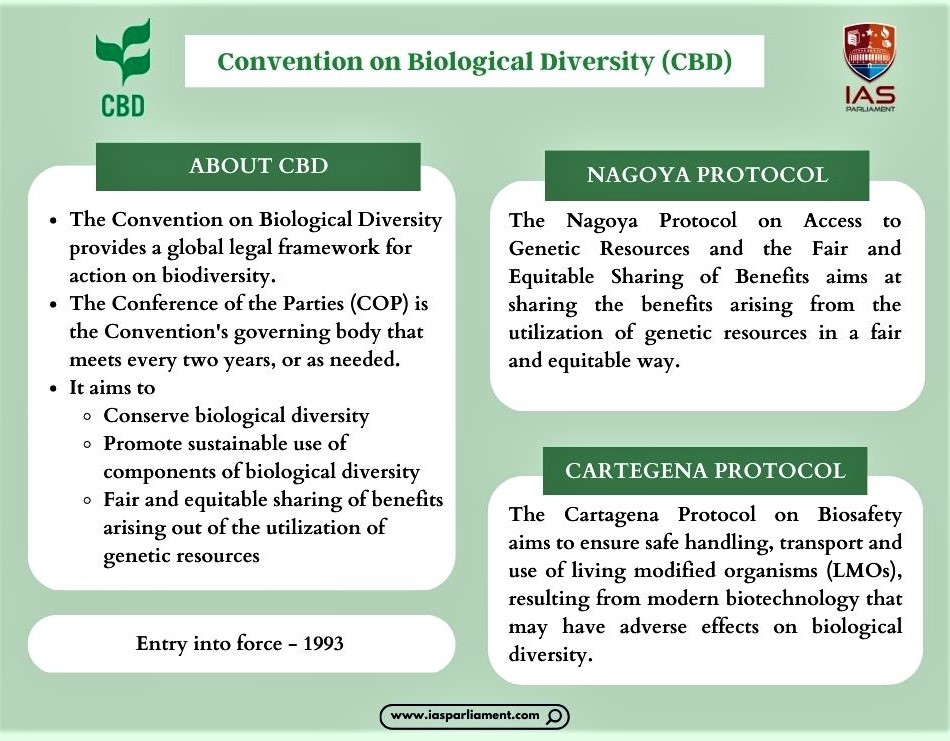Recently COP 16 was concluded in Cali Colombia in November 2024.
UN Framework Convention on Climate Change (UNFCCC) and the UN Convention to Combat Desertification (UNCCD) also instituted at the 1992 Rio Earth Summit.

To know about UNCBD COP – 15, Click here
Digital Sequence Information (DSI) refers to the digital data derived from genetic resources, such as DNA sequences of plants, animals, and microorganisms.
Global Biodiversity Framework Fund (GBFF), agreed at COP 15 in 2022 and established by the Global Environment Facility (GEF), accepts contributions from governments, the private sector, and philanthropies.
Synthetic biology utilizes engineering principles to create or modify organisms through DNA sequencing and genome editing, opening doors to both opportunities and regulatory challenges in biodiversity.
The EBSAs are special areas in the ocean that serve important purposes, to support the healthy functioning of oceans and the many services that it provides.